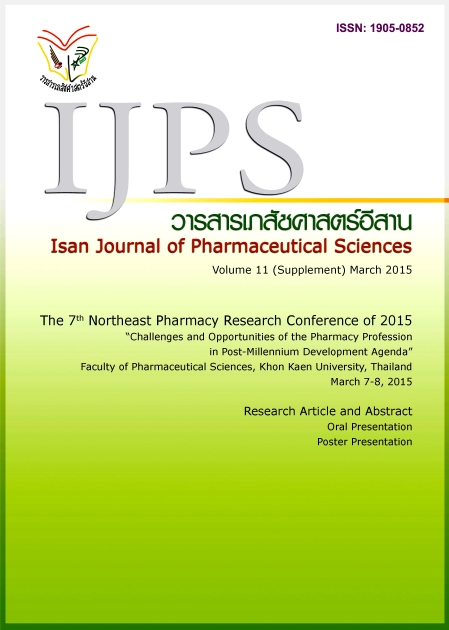Hospital Procurement Trend for Statins and Agents Acting on the Renin Angiotensin System: A Case Study of 14 Public Hospitals
Main Article Content
Abstract
Introduction: In Thailand, drug expenditure has continuously increased from 32% of health expenditure in the year 1999 to 46% in the year 2008.This descriptive study aims to monitor drug procurement trendinpublic hospitals. Drug price, purchasing quantity, and purchasing value of statins and agents acting on the renin angiotensin system were monitored. Methods: The study was conducted by using retrospective purchasing data during the fiscal year 2010 and 2013 which were obtained from 14 regional hospitals and provincial hospitals. Results: Findings showed thatthe single source rosuvastatin 10 mg had highest purchasing value among statins whilethe locally made losartan 50 mg had highest purchasing value among agents acting on renin angiotensin system. Based on market status, trend of drug prices for most groups including single source, original, locally made generic, and imported generic drugs showed no change or slightly decreased. Greater decrease in price was observed in original drugs. Purchasing volume of locally made and imported
generic drugs had increased. On the other hands, purchasing volume of original and single source drugs had decreased and led to the continuously decreased intheir purchasing values. For statins and angiotensin receptor blockers, the proportions of purchasing values of original, and single source drugs still high (55% and 64%, respectively). Conclusion: Measures to control purchasing of original drugs and non essential drugs should be implemented for the study drug groups and monitoring of procurement trend in the country representative level should be warranted.
Article Details
In the case that some parts are used by others The author must Confirm that obtaining permission to use some of the original authors. And must attach evidence That the permission has been included
References
Addis A, Magrini N. New approaches to analyzing prescription data and to transfer pharmacoepidemiological and evidence-based reports to prescribers. Pharmacoepidemiol Drug Saf 2002; 11: 721–6.
Berndt ER. Pharmaceuticals in U.S. health care: determinants of quantity and prices. J Econ Perspect 2002; 16: 45–66.
Dubois RW, Chawla AJ, Neslusan CA, et al. Explaining drug spending trends: does perception match reality Health Aff 2000; 19: 231–9.
Health Insurance System Research Office and Health System Research Institute. Prescription data analysis of 34 pilot hospitals during the fiscal year 2009 and 2011. July 2011 [cite 2014 Feb 14]Available from: URL: http://hdl.handle.net/11228/3417
Morgan SG. Quantifying components of drug expenditure inflation: the British Columbia seniors’ drug benefit plan. Health Serv Res 2002; 37: 1243–66.
Wibulpolprasert S et al. Public Health System in Thailand 2005-2007 [on line]. 2005 [cite 2014 Feb 14] Available from: URL: http://www.hiso.or.th/hiso/picture/reportHealth/ThaiHealth2005-2007/report2005-6-4.pdf


